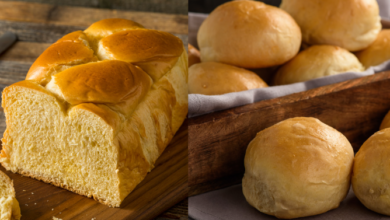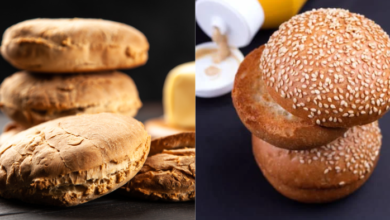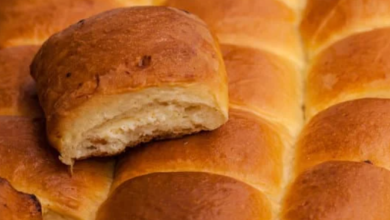Brioche Troubleshooting: Why is My Dough Not Fluffy?

What To Know
- Join us as we embark on a journey to decode the mysteries behind a flat brioche and uncover the secrets to achieving that perfect, cloud-like texture.
- Baking brioche at too low a temperature can prevent it from rising properly, while baking at too high a temperature can cause the outside to brown too quickly, resulting in an undercooked interior.
- If the brioche is shaped too tightly or unevenly, it can prevent the dough from expanding uniformly and lead to a flat or misshapen result.
As an avid baker, there’s nothing quite as disheartening as a flat, dense brioche. Brioche, with its characteristically fluffy and buttery texture, is a culinary masterpiece that can elevate any breakfast or afternoon tea. But what happens when your brioche turns out to be anything but light and airy? Join us as we embark on a journey to decode the mysteries behind a flat brioche and uncover the secrets to achieving that perfect, cloud-like texture.
Why is My Brioche Not Fluffy?
The tantalizing fluffiness of brioche lies in its intricate interplay of ingredients and techniques. However, a slight misstep in any of these elements can lead to a disappointing outcome. Here are some common culprits that can contribute to a flat brioche:
1. Incorrect Ingredient Ratios
Precision is paramount when baking brioche. An imbalance in the ratio of flour, butter, eggs, and yeast can disrupt the delicate balance of the dough. Too much flour can result in a dense and crumbly brioche, while too much butter can lead to a greasy and flat texture.
2. Inadequate Kneading
Kneading is an essential step in developing the gluten network within the dough. Insufficient kneading leaves the gluten underdeveloped, resulting in a weak structure that cannot support the desired fluffiness.
3. Over-proofing
Proofing is the process of allowing the dough to rise before baking. Over-proofing can cause the dough to become too airy and weak, leading to a flat brioche. It’s crucial to follow the recommended proofing times and monitor the dough’s rise carefully.
4. Incorrect Baking Temperature
The oven temperature plays a significant role in achieving the desired texture. Baking brioche at too low a temperature can prevent it from rising properly, while baking at too high a temperature can cause the outside to brown too quickly, resulting in an undercooked interior.
5. Lack of Steam
Steam helps create a humid environment within the oven, which promotes the development of a light and airy crumb. If your oven does not have a steam function, you can create your own by placing a shallow pan of water on the bottom rack.
6. Stale Ingredients
Fresh, high-quality ingredients are essential for a successful brioche. Using stale or old ingredients, particularly yeast, can compromise the dough’s ability to rise and result in a flat brioche.
7. Incorrect Shaping
Proper shaping ensures an even distribution of the dough and promotes optimal rising. If the brioche is shaped too tightly or unevenly, it can prevent the dough from expanding uniformly and lead to a flat or misshapen result.
Troubleshooting Tips
Now that we’ve identified the potential culprits, let’s explore some practical solutions to achieve that elusive fluffy brioche:
1. Measure Ingredients Accurately
Use a kitchen scale to measure all ingredients precisely, ensuring the correct proportions.
2. Knead Thoroughly
Knead the dough for at least 10-15 minutes by hand or using a stand mixer until it becomes smooth and elastic.
3. Proof Carefully
Follow the recommended proofing times and monitor the dough’s rise. The dough should double in size, but not over-proof.
4. Preheat the Oven Properly
Preheat the oven to the correct temperature before baking. Use an oven thermometer to ensure accuracy.
5. Create Steam
Place a shallow pan of water on the bottom rack of the oven to create a humid environment.
6. Check Ingredient Freshness
Use fresh, high-quality ingredients, especially yeast. Check the expiration dates on all ingredients before using them.
7. Shape Correctly
Shape the brioche loosely and evenly, ensuring all sides have equal tension.
Beyond the Basics
Once you’ve mastered the fundamentals, here are some additional tips to elevate your brioche-making skills:
8. Use Bread Flour
Bread flour has a higher protein content than all-purpose flour, which helps develop a stronger gluten network and results in a more resilient brioche.
9. Add a Touch of Sugar
A small amount of sugar can enhance the yeast’s activity and contribute to a more flavorful brioche.
10. Brush with Egg Wash
Before baking, brush the brioche with an egg wash made from one egg beaten with a tablespoon of water. This will give the brioche a golden-brown crust and a glossy sheen.
11. Let Cool Completely
Allow the brioche to cool completely on a wire rack before slicing and serving. This will prevent the bread from becoming soggy.
A Brioche Odyssey: Embracing the Journey
The pursuit of the perfect brioche is an ongoing journey filled with experimentation and learning. Don’t be discouraged if your first attempts don‘t yield the desired results. With patience, practice, and a willingness to troubleshoot, you will eventually master the art of creating fluffy and delectable brioche.
What People Want to Know
Q: Why is my brioche crumbly?
A: A crumbly brioche can be caused by using too much flour, over-kneading, or under-proofing.
Q: Why is my brioche dense?
A: A dense brioche can be caused by using too little yeast, insufficient kneading, or over-proofing.
Q: Why does my brioche have a gummy texture?
A: A gummy brioche can be caused by using too much sugar, over-kneading, or under-baking.
Q: Why does my brioche have a sour taste?
A: A sour taste in brioche can be caused by using too much yeast or over-proofing.
Q: How can I store brioche?
A: Store brioche in an airtight container at room temperature for up to 3 days.




